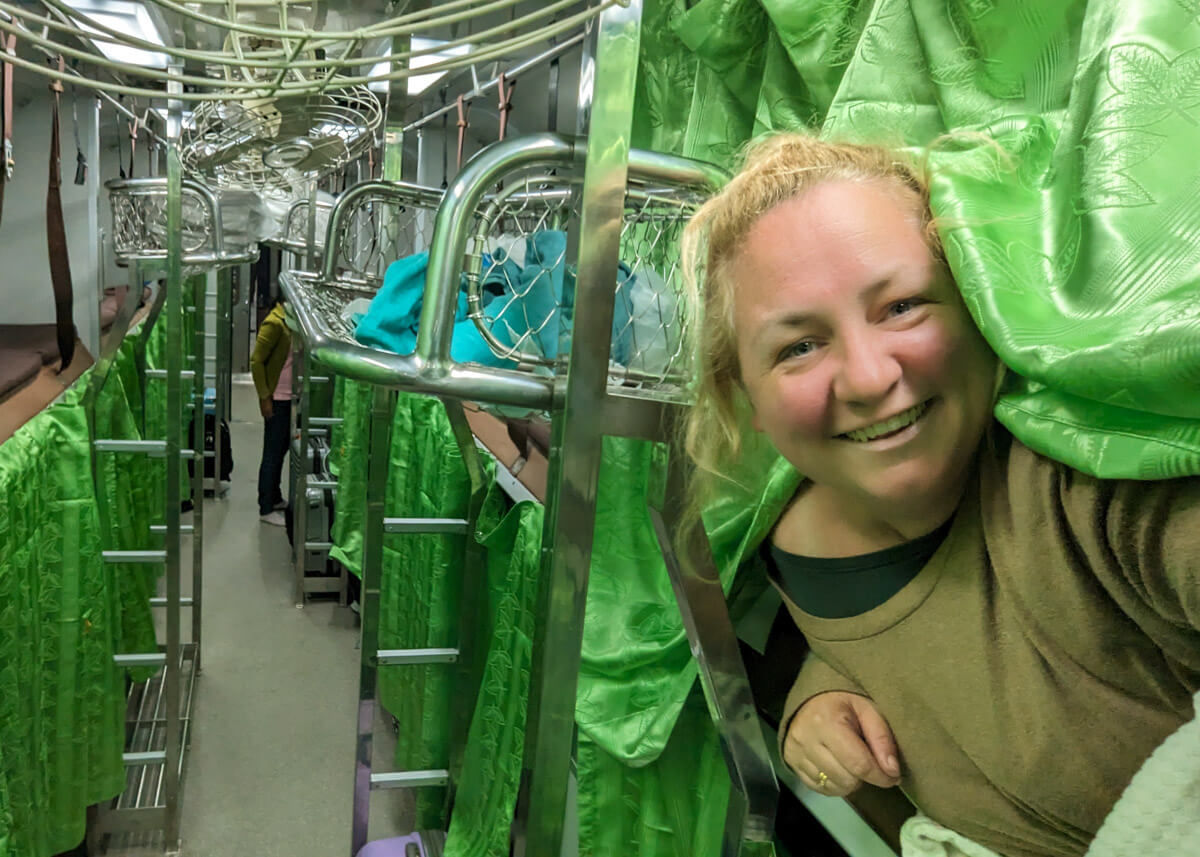Train travel in Southeast Asia is one of travel’s great adventures and, with these tips and tricks, we’ll help you make the most of your journey and get you off to the best possible start
Southeast Asia is home to some of the most picturesque railway lines in the world and, for the most part, your journey on the rails around the region will be stress-free and packed full of lifelong memories. With friendly fellow passengers, well-connected routes and comfortable trains, your train journey isn’t just a case of getting from A to B, it’s an essential part of your trip.
However, there are still a few tips and tricks that might help you enjoy the journey even more and avoid some of the common mistakes and pitfalls that travellers have made in the past. We’ve spent many hours on Southeast Asia’s trains and have picked up plenty of advice to share, including how to buy tickets, what to pack, what to expect on board and how to make sure you stay safe.
Still unsure if train travel is the best way to explore Southeast Asia? Check out our Why Train Travel? guide to discover why we love this mode of transport across the region, or check out our choice of the top five train journeys in Southeast Asia.
Disclaimer: This post contains affiliate links. Should you click to purchase, it is at no additional cost to you, but we receive a small commission.
1. Book online and early
In almost all Southeast Asian countries, it’s much easier to book tickets online rather than going to the station and trying to explain your journey requirements to someone who may or may not even speak your language. Start as you mean to go on and make your journey stress-free by booking online using the excellent Baolau site; it’s easy to use, lets you to check routes and timetables, accepts international credit cards, and (usually) lets you select your seat before booking.
As Baolau are hooked up to each train company’s booking database, confirmation is almost immediate and pdf tickets are delivered directly to your inbox. You do pay a very small commission, but in our opinion, it’s well worth the expense.
We can’t think of a reason to make a special trip to the station to book your tickets in person and often the offices are either closed or busy. It’s also common to find the staff (not unreasonably) don’t speak much English, so the risk of miscommunication and incorrect bookings increase.
Another advantage of booking online is it allows you to easily plan ahead and purchase tickets as far in advance as required. Cancellation fees tend to be reasonable so you can book ahead and not worry too much if your plans end up changing. Southeast Asia has a wide range of festivals and religious holidays, so it’s a good idea to check online to see if any of them fall around your travel dates. In particular, look out for the Lunar New Year festivals (e.g. Chinese New Year and Tet) and Songkran.
Book as early as you can at these times although, at other times of the year, it’s usually possible to get seats on trains a day or so in advance if you’re not too worried about exact classes or departure times.
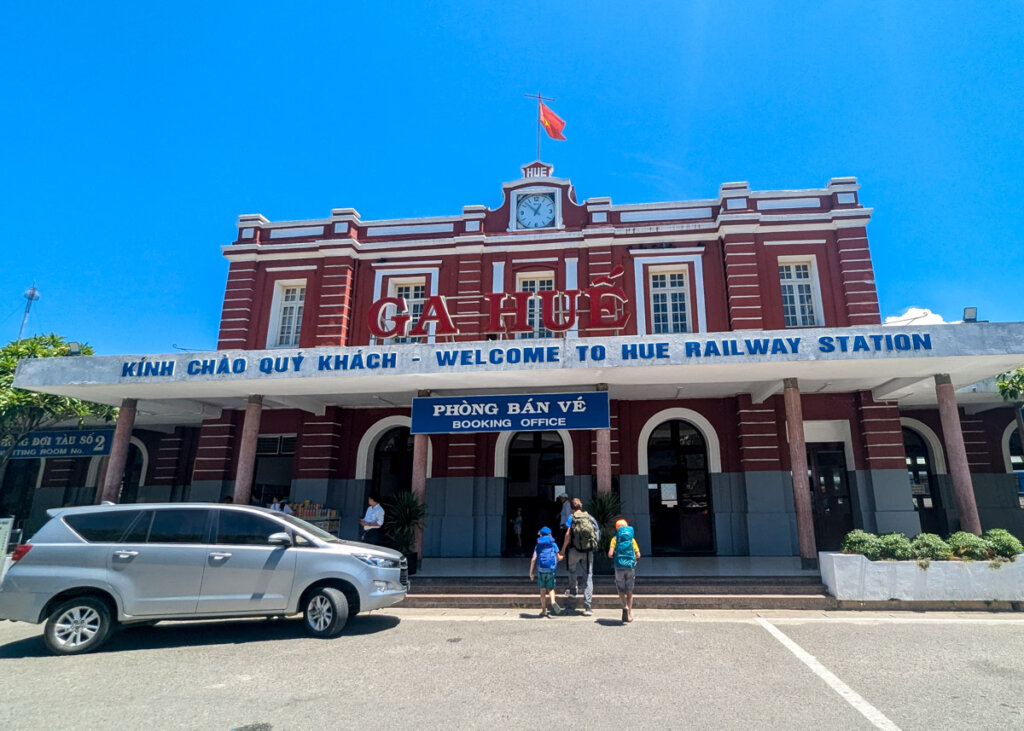
2. First class isn’t always worth the money
Most long-distance sleeper trains in Southeast Asia offer some form of first class accommodation and in places like Vietnam, private train companies actually pay to hook their own carriages onto the existing service. For first-time visitors to the region, it can be tempting to book first-class carriages but it’s often a mistake.
On Thai trains for example, the second class carriages are ideal for either couples or groups of four travelling together. The pairs of seats are in an open carriage which transform into upper and lower bunks overnight. This layout feels private yet sociable, especially when the curtains are drawn and the lights go off.
In contrast, the first class berths are in locked compartments, hidden away from the rest of the train and can feel cramped and impersonal. Although you get your own (small) bathroom area, many travellers end up using first-class once and then travel second-class on all their subsequent journeys.
Also, if you’re travelling solo, it might be more preferable to be in an open carriage rather than sharing a compartment with a stranger.
And if you need one more reason to shun the first-class option, some of the slower routes are served by older style trains on which you can open the windows in second or third class, feel the breeze and watch the world pass by. In comparison, any first class carriages on these services are likely to have locked windows and Arctic-level air-con blasting out, removing any sense of adventure and authenticity.
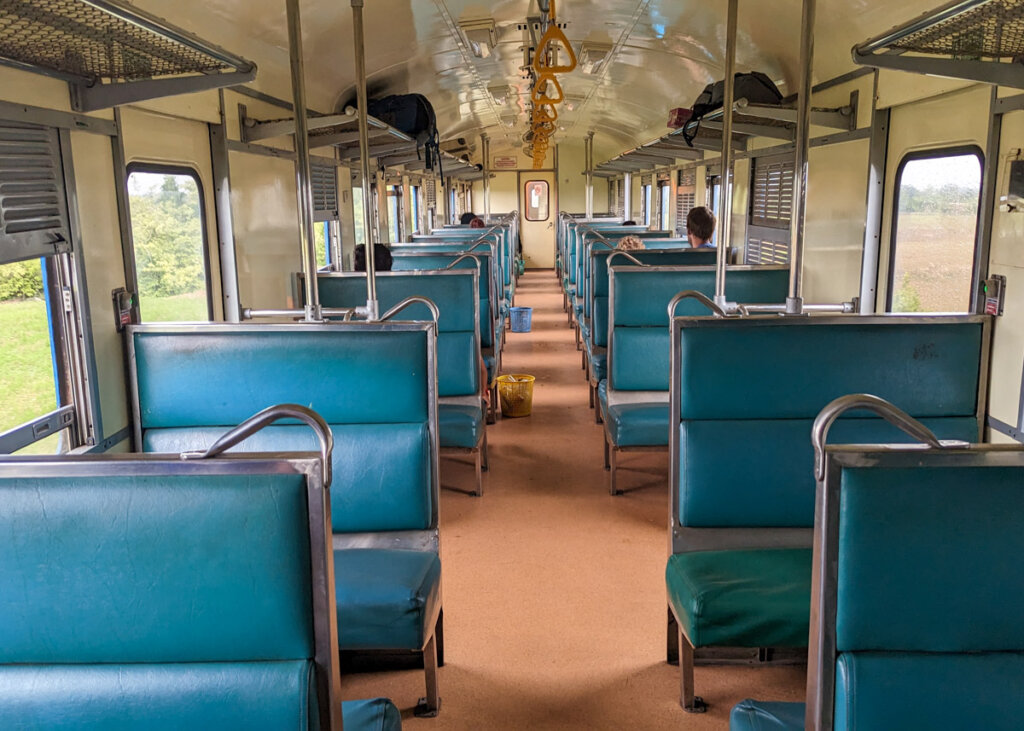
3. Bringing your own food
It’s difficult to provide an all-encompassing description of the food on Southeast Asia’s trains, other than to say the standard is generally somewhere between edible and tasty. Different countries offer different dining experiences on board: in Cambodia, relatively long stops are factored into the timetable and everyone disembarks and converges on the food vendors waiting at the platform. Meanwhile, in Malaysia and Thailand, you’re more likely to find buffet/restaurant cars attached to the train, offering pre-packaged meals and drinks.
You’ll mostly need to pay in cash (definitely if you’re buying from the vendors on the platform or at the window), although you can pay using credit card or e-wallets on Malaysian trains.
We usually find it’s preferable to eat a decent meal an hour or so before boarding (ideally away from the station as the food in and around here is never great), and then take a collection of snacks and drinks on board with us. One of the most familiar appliances of Southeast Asia travel is the hot water dispenser, found across the region in convenience stores, hostel lobbies and, you’ll be pleased to learn, train carriages. As a result, if you’re a fan of packet noodles, it’s a good idea to bring a selection with you and self-cater.
Access to alcohol is hit and miss: you can expect to see a trolley rattle past your seat on Vietnamese trains with some beers available, or you can bring your own and no-one will really pay any attention. In contrast, you won’t find any alcohol on Malaysian trains (and nor should you bring your own onboard) and the sale of alcohol is totally banned on Thai trains after an isolated incident several years ago. Some travellers do bring their own beers and drink behind their curtain after lights-out and this is unlikely to cause any issues in Thailand.
4. What to pack and wear
On the modern air-conditioned trains in Thailand, Malaysia and Indonesia, many travellers are caught out by the consistent low temperatures. What can feel like a luxury after waiting on a hot, humid platform for an hour, soon turns uncomfortable after a few minutes. Make sure you pack a jumper or shawl/sarong that you can use to stay warm.
Loose-fitting clothes are ideal for longer overnight journeys, especially if you expect a visit to the bathroom will be needed at some stage. On sleeper trains, blankets, pillows and sheets are provided, so you will be comfortable, but your own blanket is a good idea if you have one already in your backpack.
In many Southeast Asian countries, it’s considered rude to keep your shoes on when lying on your berth, so we always pack a pair of slippers or flip-flops that can easily be slipped on and off when you need to walk around the carriage. If you’re just in a normal seat for a daytime journey, shoes or trainers are fine.
One of the great delights of longer journeys is sitting back in your seat and watching the scenery pass by through the window; you might find hours pass by this way without any need for distraction. If not, make sure you pack a book or travel games to pass the time and a charger for your mobile phone (some newer trains have charging points, otherwise bring a power bank).
If you’re a light sleeper, consider bringing some earplugs and an eye-mask. The lights never go out fully at night and your fellow passengers tend to make a huge amount of noise when arriving or alighting from the train.
5. Avoid heavy, rigid suitcases
This advice applies to all aspects of travel, but it’s highly recommended you bring a backpack if you’re able to carry it comfortably. Luggage racks are provided on all trains although space is limited and you might find it difficult to fit in large, rigid suitcases. In contrast, soft backpacks can be squeezed under seats and beds, or squashed onto the luggage racks. Large heavy suitcases are also difficult to manoeuvre around the carriage.
Almost universally, the luggage limit is 20kg but this is rarely (if ever) enforced and as long as you’re able to carry it yourself and don’t push your luck, in practical terms, there’s no weight limit. Having said that, 20kg is the maximum most people can carry anyway, so make life easy for yourself and pack lightly and efficiently.
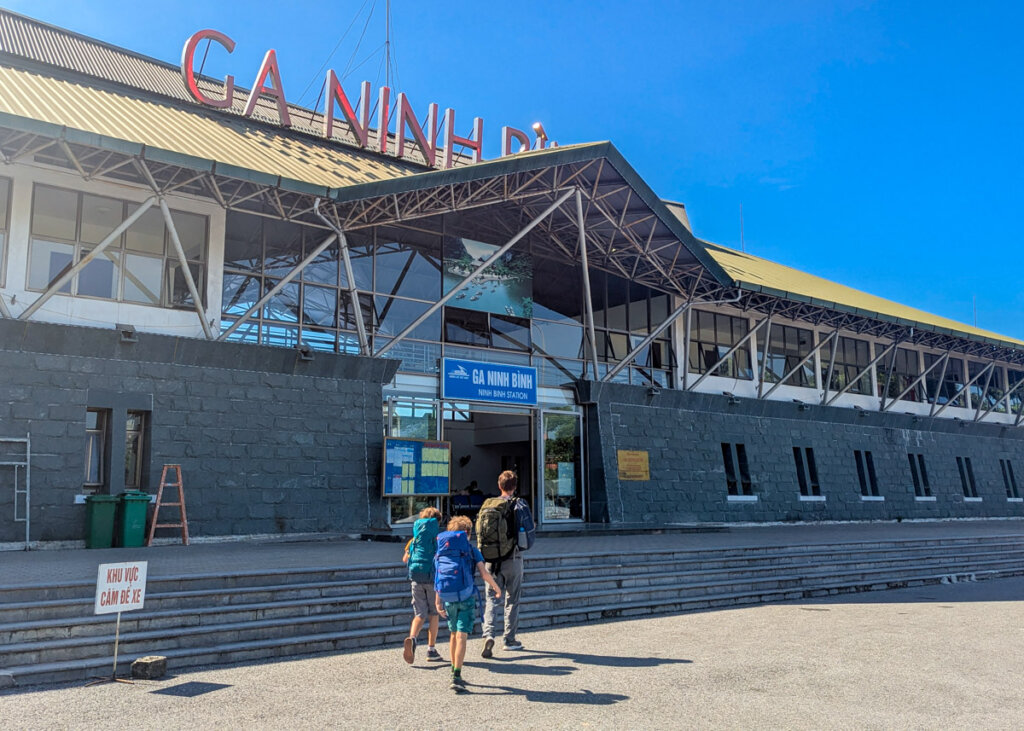
6. Make friends with the conductor
Train conductors are at the top of the train food chain, so it doesn’t do any harm to make friends with them. If nothing else, let them know which is your stop in case you miss it (they’ll find you in advance and give you some warning). At best, you might get an extra pillow, compartment upgrade or access to the conductor’s noodle and/or beer shop.
7. Onboard security
There are some trouble spots and dodgy areas on Southeast Asia’s railway network, and these are discussed in the individual country guides. Keep your wits about you but also maintain perspective as, on the whole, the chances of incidents are rare.
Trains will always have a conductor on board and often some security guards and/or railway police. It’s very low-key though and you usually won’t notice their presence. In some parts of southern Thailand, the security provision is more obvious.
Do remember that it’s very difficult to just wander onto a Southeast Asian train as access to the platforms and trains are largely controlled by barriers, ticket checks and security guards. You can be fairly sure that no-one has managed to sneak onto the train who shouldn’t have, so don’t be overly paranoid about your fellow travellers once the train is moving. Make sure that you (as always) keep your passport and other valuables on you when sleeping and don’t risk leaving them in a backpack or rucksack.
If you’re leaving your seat or berth to visit the toilet or buffet car (or just fancy a wander along the train), consider investing in a safety cable lock to secure your larger bags to something sturdy, which will deter an opportunistic thief. This is largely for your own peace of mind though, the chances of someone stealing your bags (especially if other passengers are around and you’re not at a station stop) are vanishingly rare.
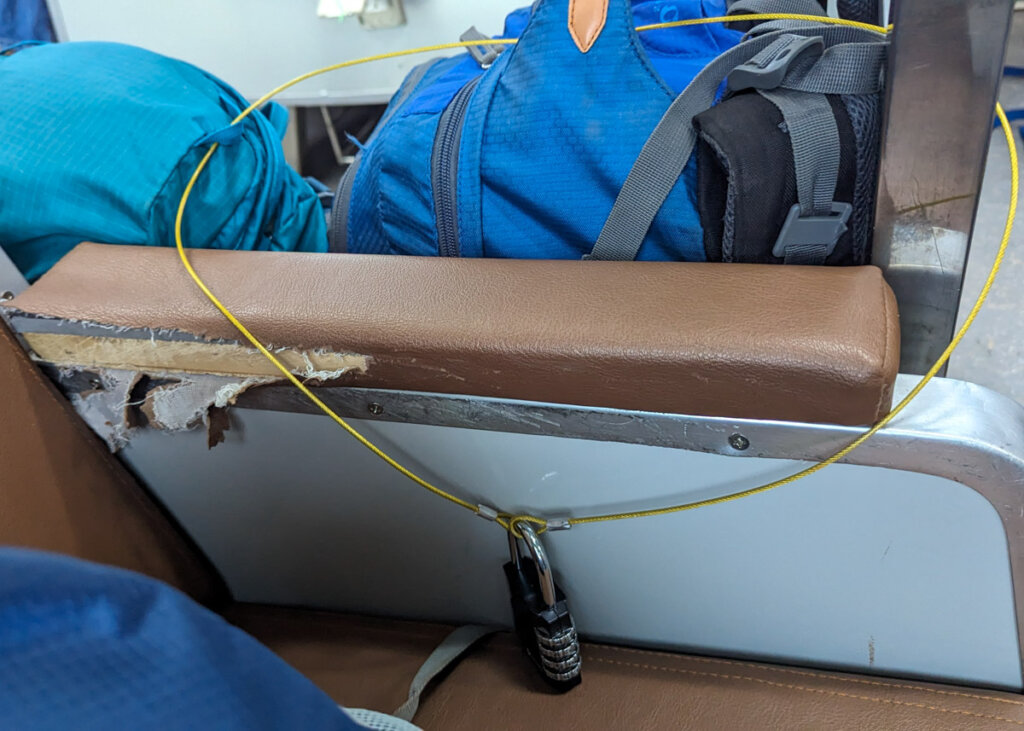
8. Getting to and from the stations
There’s a sweet spot in terms of arrival time for your train. Southeast Asian train stations are, with the notable of exception of one or two examples usually in capital cities, soulless places that you’d ideally spend the minimum amount of time. But, with their (often) poor signage and lack of organisation, you do still need to arrive in enough time to find your way around and get to the right platform. Also remember to factor in the ticket and baggage checks before you can climb onboard.
In Vietnam for example, there are relatively few trains operating on the network at any one time, so station staff block access to the platform until ten minutes before departure, forcing everyone to play musical chairs in the waiting room. There are precious few information boards here as well, so don’t expect much up-to-date information on delays or timetable changes.
In Cambodia, the network is only comprised of a few trains per day, so a train departure or arrival is quite the event at the station. Don’t expect any information here either though so make sure you get on the right train as it’s not uncommon for two services to depart within a few minutes of each other.
Try to take an e-hailing ride to and from the station if possible. If you do need to take a regular taxi, remember the golden rule of never accepting a ride from someone who approaches you. Instead, seek out the official taxi rank and check the fare before setting off. Unfortunately, in some countries, railway stations are the haunts of low-level scam artists who see weary travellers as fair game.
You’ll probably need to send your bags through a security scanning machine before getting into main part of station and you’ll nearly always need to show your ticket and (sometimes) passport to gain entry to the platforms (and once more before you board).
9. Delays and timetables
Delays aren’t uncommon, although the timetables tend to have a huge amount of slack in them to account for this. Services actually tend to leave on time for the most part, although delays do creep in as the journey proceeds.
Don’t make the mistake of assuming that just because you left one station late that the delay will stay the same throughout the journey. Thanks to the timetable padding and mysterious bursts of speed, it’s common for services to arrive at the next station on time, even though it left the preceding station three hours late.
Timetables are a guide rather than set in stone, unlike in places such as Japan. A printout is often posted at the end of the carriage, but it’s a good idea to have your own copy so you can keep track of the train’s progress.
We always make sure to download the map for the entire route in Google Maps so we easily see where we are, even when there’s no mobile signal. This is especially useful when approaching your stop as you’ll get some notice of arrival time. Onboard announcements tend to be difficult to understand at best, and inaudible at worst.
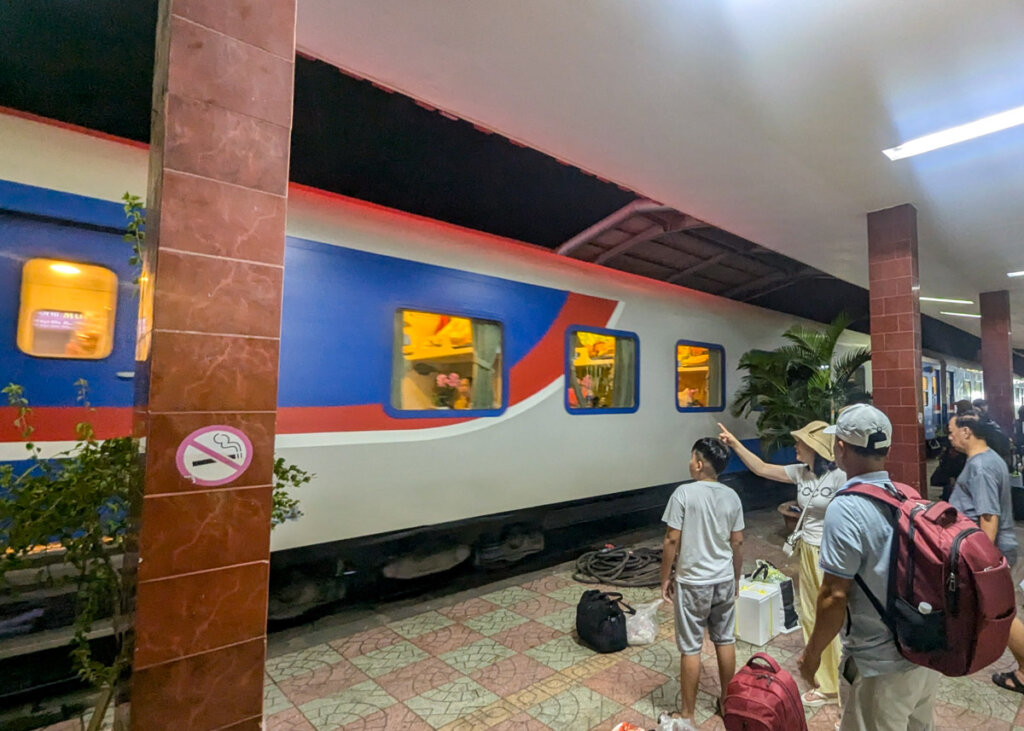
10. Internet access
Wifi is rare / non-existent on almost all Southeast Asian trains and, even if it is advertised, the speed and quality is likely to be low. As mobile data is increasingly available, you’re nearly always best to buy a local sim or e-sim and go from there, although remember that many routes are out in the countryside away from population centres, so access will still be limited.

